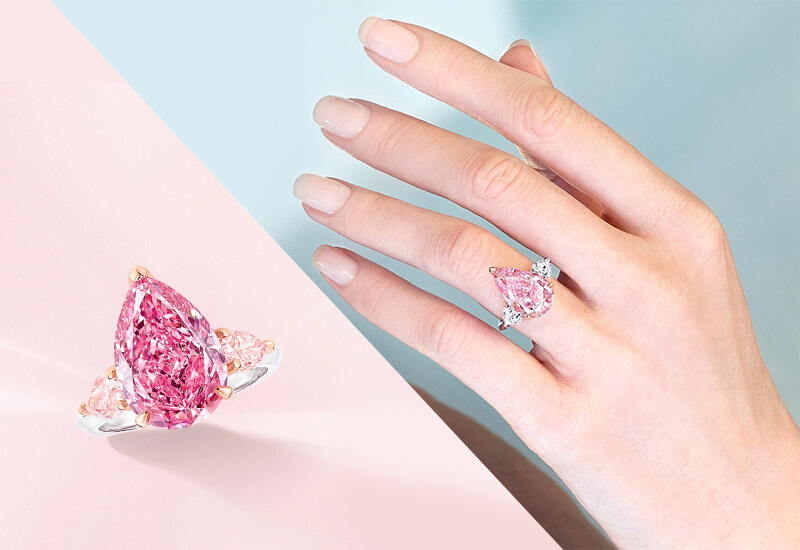Choosing a Lab Grown Pink Diamond Engagement Ring
When you are planning to get engaged to that one cuppy cake of your life, the most important decision you’ll make is choosing the right ring. But which diamond ring is right for you? tension not! that’s why we are here to show you the trendiest diamond engagement ring “Pink Diamond Engagement Ring
But how do you know which diamond is good for you natural or lab grown diamond? And what are the benefits of choosing a lab-created pink diamond over a natural diamond engagement ring? To answer all these questions and more, read on! In this blog post, you’ll learn about how pink diamonds are made, what makes a diamond pink, and which ring is best for you based on your individual needs and wants. Whether you’re looking for an eco-friendly option, want to avoid conflict diamonds, or want the best quality diamond available, this guide has everything you need to know about lab-created pink diamonds!
How Are Lab Diamonds Made?
When it comes to choosing the right diamond engagement ring, it’s important to understand how lab-created diamonds are made. Diamonds are usually extracted from the earth using expensive and time-consuming techniques. However, in recent years, lab-created diamonds have become increasingly popular because they’re less expensive and same durable than regular diamonds. They’re also made by deposits of carbon under high pressure and temperature conditions, which gives them a unique sparkle and brilliance.
Additionally, lab-created diamonds can be enhanced with other elements to make different colors. So, if you’re looking for a pink diamond ring that’s unique and lasting, lab-created diamonds might be the perfect option for you!
A Guide to Choose Lab Created Pink Diamond
Before jumping onto the engagement ring let’s discuss the diamond. That’s where lab-created pink diamonds come in. These lab colored diamonds are similar to traditional diamonds in terms of properties and shape, but they come in different colors and textures.
They’re also the most popular lab-created diamond color in 2024 and are often preferred for engagement rings nowadays because of their unique Registry value. So, whether you’re a first-time diamond shopper or you’re looking to update your ring collection, be sure to research all the available options so you can find the perfect one for your special occasion!
How are Lab Pink Diamonds Made?
When it comes to engagement rings, no question that lab-created pink diamonds are a top choice. These pink-colored diamonds are mostly made by the combination of the chemical vapor deposition (CVD Diamonds) method. The result is a diamond that is almost completely high quality, with a permanent pink hue. This process takes place in a vacuum chamber with a small carbon seed and other gases, which causes the carbon atoms to bond together into a solid crystal form and some chemicals and gases that give the diamond different colors.
What Makes a Diamond Pink?
Well, generally pink stone is caused by a distortion in the diamond’s crystal lattice, created by intense heat and great pressure from all directions and at various depths, and makes different shades of pink hue.
This method caused different shades of pink hue diamonds, ranging from pale pink to an intense purplish pink color, there are lots of shades to choose from. So, don’t get confused about what to choose!
Shades of Pink
Choosing the perfect pink diamond for your engagement ring is a daunting task, but it’s not impossible. Below we’ll help you navigate through the many shades of pink diamond options and help you find the perfect diamond ring for your partner. First, let’s take a look at the different shades of pink diamonds and their hue names.

What is the Cost of Lab-Grown Pink Diamonds?
When it comes to choosing the right engagement ring, there is a lot to consider. From the diamond to the gold, everything has to be perfect. But what about the diamond itself? How can you be sure that you’re getting the best possible diamond? Well, one best option is to go with a lab-created pink diamond. A lab-grown pink diamond can cost you upwards of $5,000 per carat, and a light pink color lab diamond can cost as little as $2000 per carat. While natural pink diamonds are one of the most expensive choices and can cost you more than $1,00,000 per carat.
So, it’s up to you what you gonna choose. If you want to spend more money on an unethical diamond, then go for a natural pink diamond. Or if you prefer one small luxury trip after your engagement, then go for a lab-created pink diamond. Either way, you will be happy with your decision!
Lab Grown Pink Diamond Engagement Ring
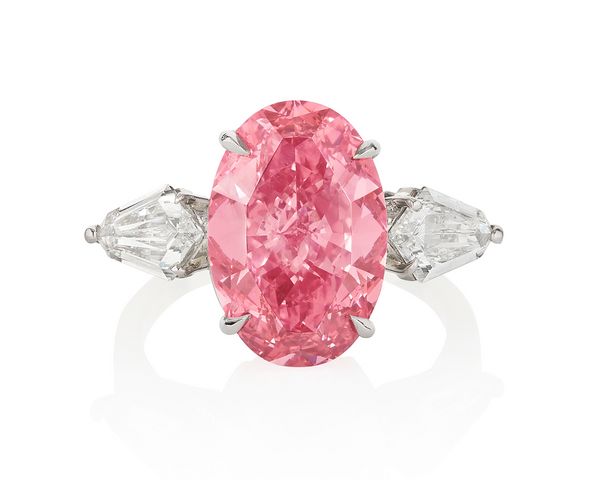

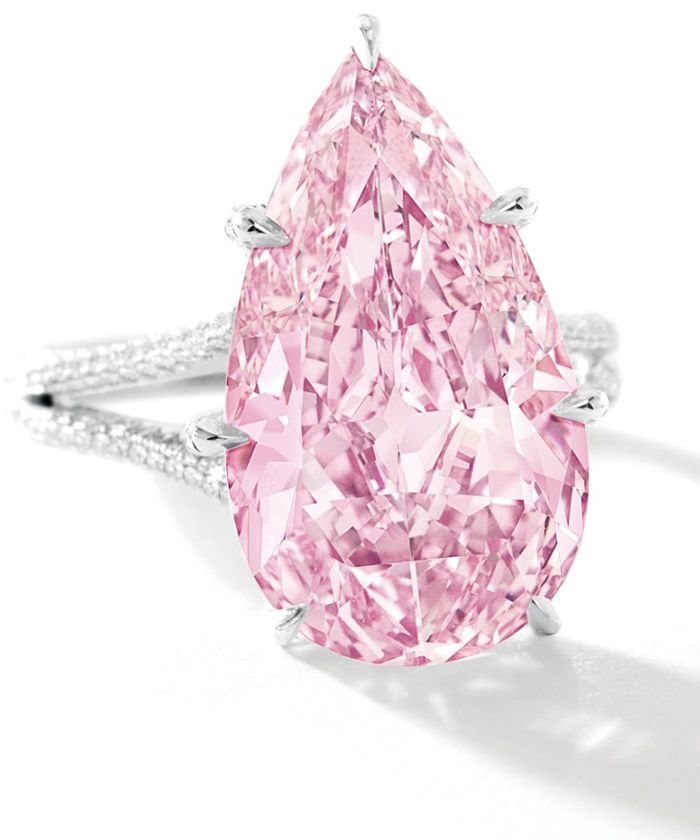
Now, let’s get into the main topic, your pink diamond engagement ring! Lab-created pink diamonds are on the rise, and for good reason. They’re often less expensive than traditional diamond rings, and they come in a wide variety of colors and shapes. What’s more, pink lab-grown diamonds are real stones that have been cut and polished like regular diamonds, so you can expect the same quality and reliability as a traditional diamond ring.
To choose the right lab-created pink diamond engagement ring for you, be sure to consider your budget and lifestyle preferences such as ring setting, diamond shape, Diamond quality, etc. For a detailed explanation of these factors, keep reading!
Choose Setting
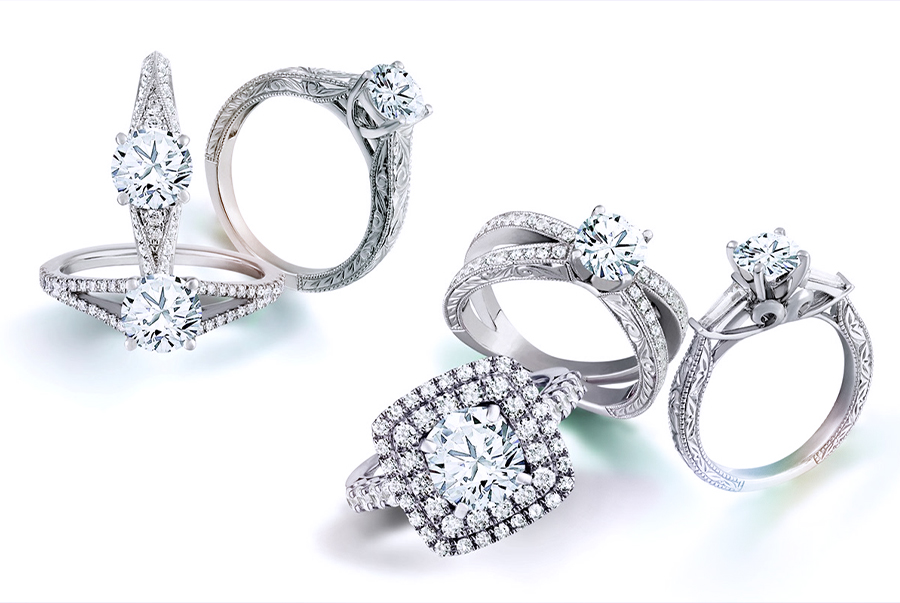
The first thing you need to decide when buying a lab-created pink stone engagement ring is the ring setting. There are many types of settings available to choose from including prong setting, pave setting, halo setting solitaire setting, cluster setting, channel setting, bezel setting, vintage setting, etc. Prong sets are usually used for mostly diamond rings because they hold the diamond securely. Pave settings are also great for diamond engagement rings because they add a bit of sparkle to the overall look of the ring.
Halo settings are ideal for people who love big blingy rings. Cluster settings are great for those looking for something unique and modern. And bezel settings are great for people who don’t want any fancy settings on their ring. Vintage settings are great for people looking for a classic setting with a modern touch.
Diamond quality – what’s important?
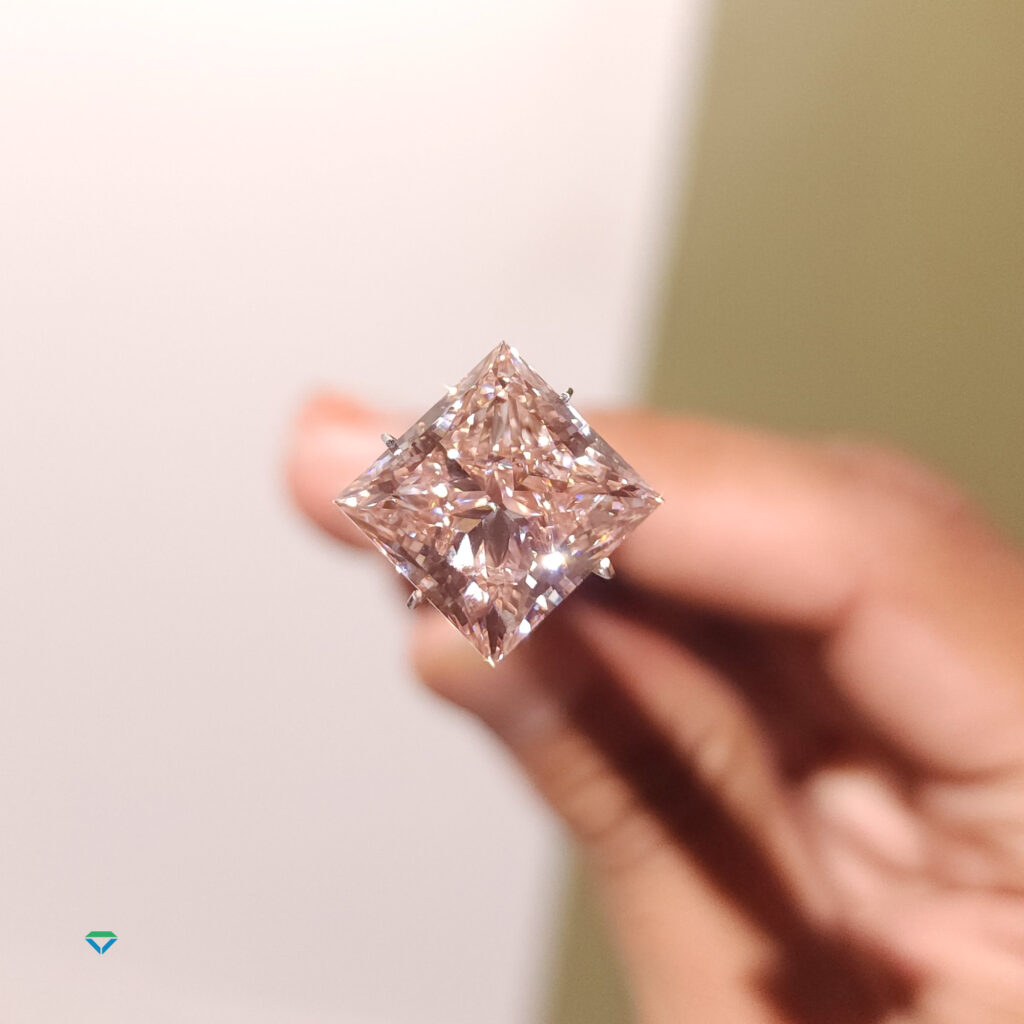
When it comes to diamond quality, what’s most important? The answer is surprisingly simple – diamonds must be of high quality.
What does that mean in practice? Well, when you’re shopping for a diamond, make sure to focus on its characteristics and look for diamonds that meet your specific needs. Of course, no two diamonds are exactly alike so it’s important to consider other factors such as carat, clarity, and cut. But overall diamond quality will be based on factors like clarity and color grades as well as the diamond’s size and shape.
So how can you tell if a diamond is of good quality? One way is by checking with an independent gem lab certificate or review site before making your purchase. Another option would be to ask the jeweler whether they have the diamond graded by GIA or IGI – this ensures that you’re getting an accurate representation of the diamond’s true qualities.
Diamond Shape
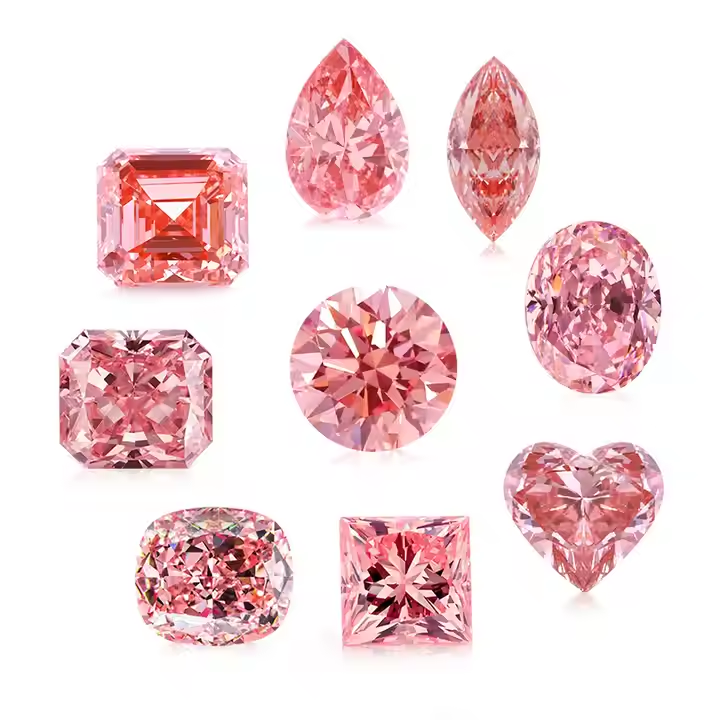
When choosing the diamond engagement ring that is perfect for your fiancée, it is important to take a perfect diamond shape into account. Well, a round brilliant cut diamond is one of the most popular choices for an engagement ring because it looks good on all hand sizes.
However, if you’re looking for a more unique diamond shape, go for a cushion cut diamond or a Princess cut diamond. These cuts give off a very elegant appearance and sparkle, which makes them ideal for any type of woman.
If you want something really special, custom-made diamond cuts might be the answer. This means you can go with a pie-cut diamond where smaller fancy-cut diamonds are carefully matched and polished to shape together an illusion of a larger solitaire fancy-cut diamond.
Ring Size
Choosing the right ring size is an important part of engagement planning. Not too small, not too large – it’s crucial to get the perfect fit. To find out which ring size works best for you, measure your ring finger using a tape measure or a paper strip with the help ruler scale. Then compare that measurement to the measurements provided by the manufacturer.
| Diameter (mm) | India | Europe | UK, Australia & South Africa | United States & Canada | China | Singapore & Japan | Hong Kong |
|---|---|---|---|---|---|---|---|
| 14.01 | 4 | 44 | F½ | 3 | 6 | 4 | 6 |
| 14.33 | 5 | 45 | G | 5 | |||
| 14.5 | G½ | 3½ | 7 | 7.5 | |||
| 14.65 | 6 | 46 | H | 6 | |||
| 14.97 | 7 | 47 | H½ | 4 | 8 | 7 | 9 |
| 15.1 | I | 9 | |||||
| 15.29 | 8 | 48 | I½ | 4½ | 8 | 10 | |
| 15.5 | J | ||||||
| 15.61 | 9 | 49 | J½ | 5 | 10 | 9 | 11 |
| 15.92 | 10 | 50 | K | ||||
| 16.1 | K½ | 5½ | 11 | 10 | 12 | ||
| 16.24 | 11 | 51 | L | ||||
| 16.56 | 12 | 52 | L½ | 6 | 12 | 11 | 13 |
| 16.7 | M | 13 | 12 | ||||
| 16.88 | 13 | 53 | M½ | 6½ | 13 | 14.5 | |
| 17.1 | N | 14 | |||||
| 17.2 | 14 | 54 | N½ | 7 | 14 | 16 | |
| 17.52 | 15 | 55 | O | 15 | |||
| 17.7 | O½ | 7½ | 15 | 17 | |||
| 17.83 | 16 | 56 | P | 16 | |||
| 18.15 | 17 | 57 | P½ | 8 | 17 | 16 | |
| 18.2 | 18 | ||||||
| 18.3 | Q | ||||||
| 18.47 | 18 | 58 | Q½ | 8½ | 18 | 17 | 19 |
| 18.79 | 19 | 59 | R | ||||
| 19 | R½ | 9 | 19 | 18 | 20.5 | ||
| 19.11 | 20 | 60 | S | 20 | |||
| 19.43 | 21 | 61 | S½ | 9 ½ | 19 | 22 | |
| 19.6 | T | 21 | |||||
| 19.75 | 22 | 62 | T½ | 10 | 20 | 23 | |
| 20 | 23 | U | 22 | 21 | |||
| 20.06 | 24 | 63 | U½ | 10½ | 22 | 24 | |
| 20.38 | 64 | V | 23 | ||||
| 20.6 | 25 | V½ | 11 | 23 | 25 | ||
| 20.7 | 65 | W | 24 | ||||
| 21.02 | 26 | 66 | W½ | 11½ | 25 | 24 | 26 |
| 21.2 | X | ||||||
| 21.34 | 27 | 67 | X½ | 12 | 26 | 25 | 27.75 |
| 21.6 | 28 | Y | |||||
| 21.66 | 68 | Z | 12½ | 26 | |||
| 21.97 | 29 | 69 | Z½ | ||||
| 22.29 | 30 | 70 | 13 | 27 | 30 | ||
| 22.4 | Z+1 | ||||||
| 22.61 | 31 | 71 | Z+2 | 13½ | |||
| 22.9 | 32 | ||||||
| 23.2 | 33 | ||||||
| 23.5 | 34 | ||||||
| 23.9 | 35 | ||||||
| 24.2 | 36 |
You can also measure your ring size with the help of your old ring. If you still wear the same ring on your ring finger, then use the inside diameter of the band to determine the correct ring size.
Precious Metal
Now, let’s take a closer look at precious metals. When it comes to selecting the right metal for your engagement ring, there are several options to consider: platinum, white gold, yellow gold, and rose gold. Each metal has its own characteristic and beauty. For example, platinum is often considered a luxurious choice due to its price and rarity.
White gold is similar to platinum but slightly less expensive. Yellow gold is a classic choice for engagement rings because it looks beautiful against a variety of skin tones. And finally, rose gold is a relatively new addition to the jewelry industry. It gives a feminine look and feel, which makes it a great choice for women who prefer a softer style.
Benefits of Buying a Lab-grown Diamond Engagement ring vs Natural Diamond Engagement Ring
When it comes to choosing the perfect diamond engagement ring, there are a lot of factors to consider. But if you’re looking for a diamond that’s more than just a pretty face, lab-created diamond engagement rings are a great option. Not only are they consistent in quality and color, but they’re also less expensive than natural diamond engagement rings. So, to make it easy to understand here is the price comparison of two same design engagement rings with the same quality of diamond and weight of lab grown and natural diamond:
*The prices mentioned in the table are approximate.
| Types Of Diamond | Total Weight | Diamond Quality | Cost | |
| Lab Grown Diamond | | 1.04-Carat | SI1 – Deep Brownish Orangy Pink | $10,000 |
| Natural Diamond | 1.04-Carat | SI1 – Deep Brownish Orangy Pink | $1,10,000 | |
| Lab Grown Diamond | 2.03-Carat | VVS1- Purple-Pink | $20,000 | |
| Natural Diamond | 2.03-Carat | VVS1- Purple-Pink | $2,50,000 | |
| Lab Grown Diamond | 0.50-Carat | SI2 – Purple-Pink | $3000 | |
| Natural Diamond | 0.50-Carat | SI2 – Purple-Pink | $25000 |
Conclusion
After reading this blog, you will know everything you need to know about lab-grown pink diamond engagement rings. From the different types of diamonds that can be made in a lab, to the various factors that contribute to a diamond’s color, you will have a solid understanding of the diamond ring market. If you are planning on buying an engagement ring, make sure to choose a lab-grown pink diamond ring over a natural diamond ring. Not only will you be able to save money, but you will also be getting a diamond that is free of environmental damage. Thank you for reading!

